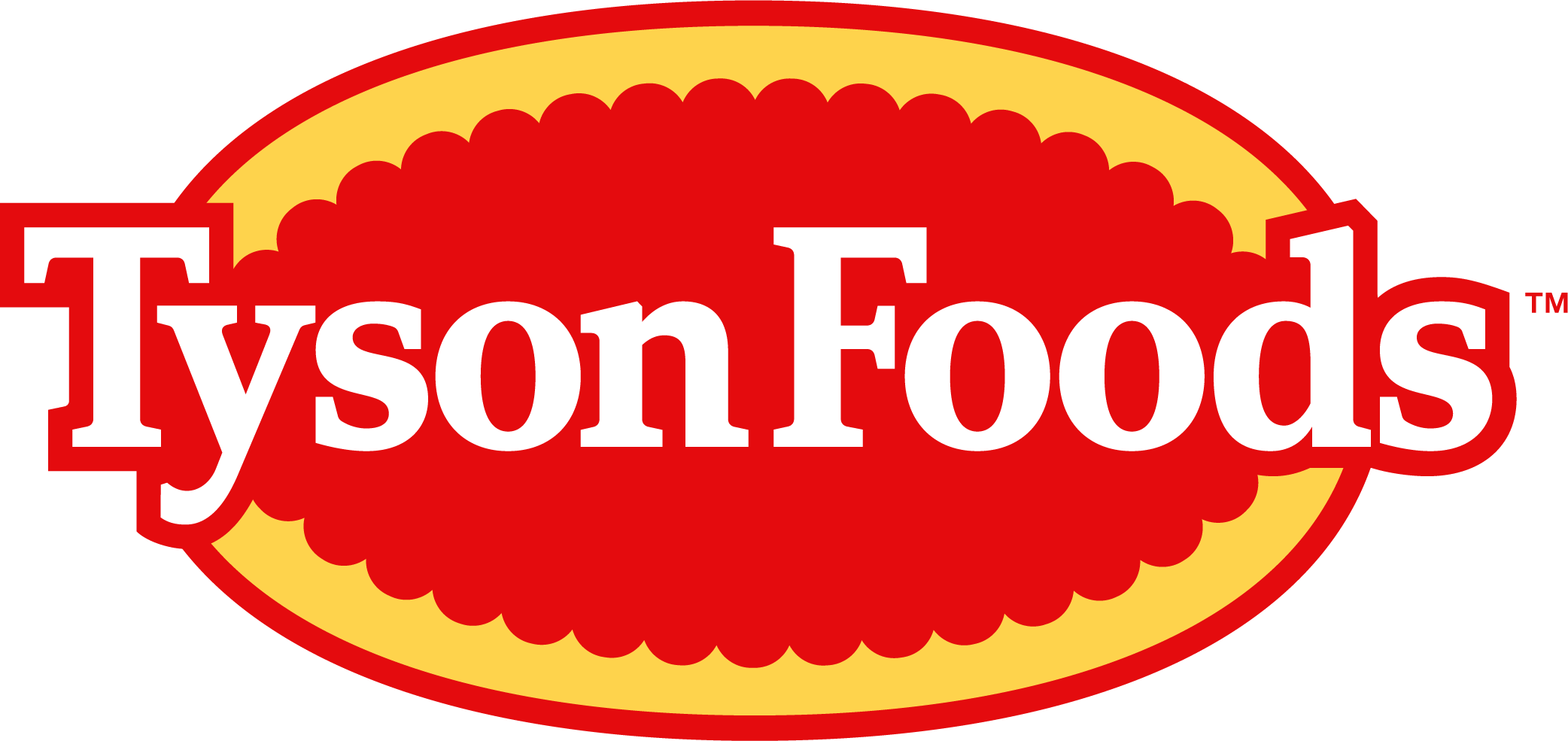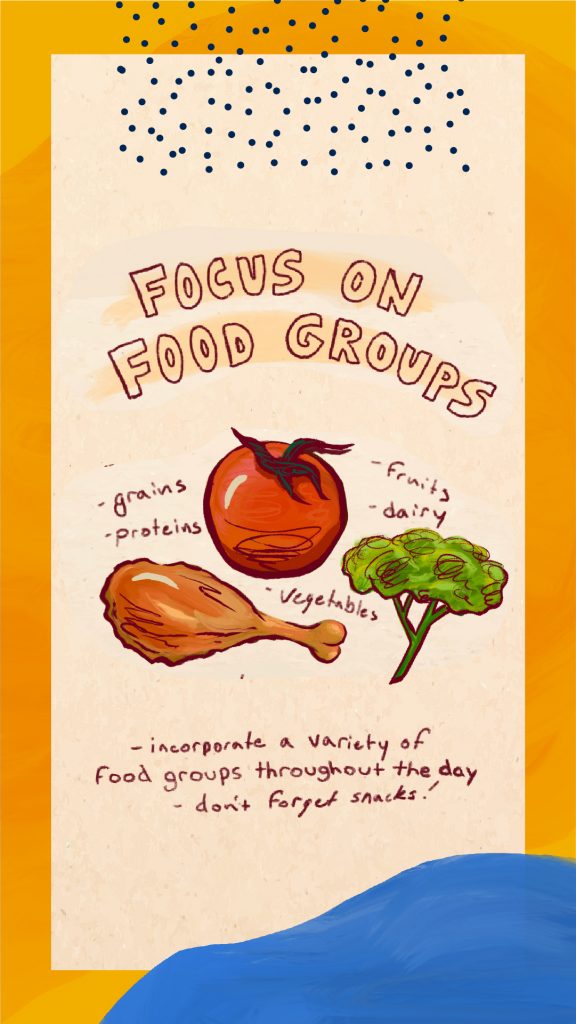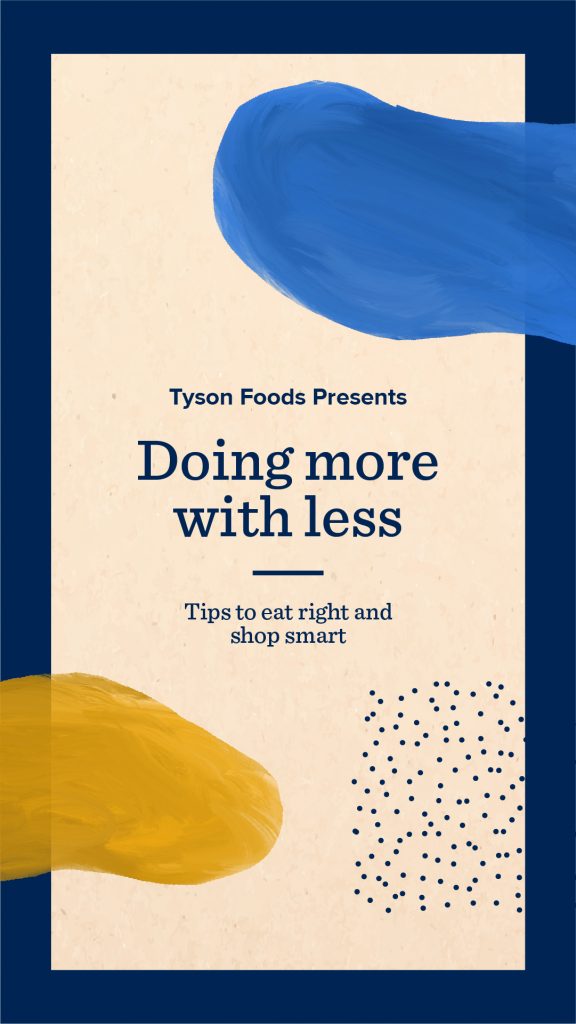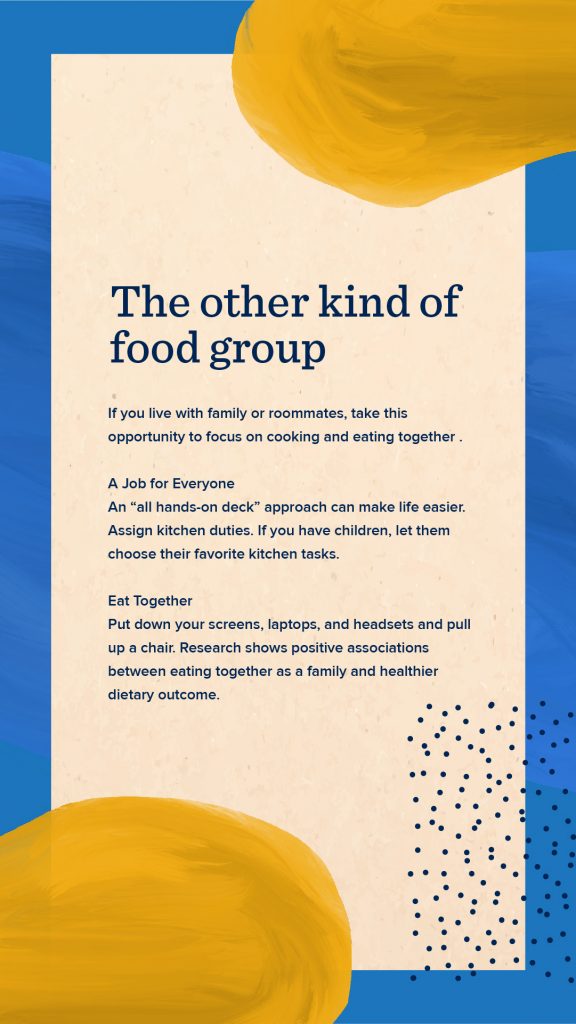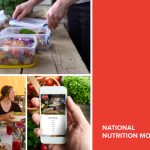As a dietitian and a mom who loves routine and craves structure, I have gone into the past couple of weeks armed with a schedule, a meal plan…and lots of hand soap. My goal has been to keep things as “normal” as possible while working from home, teaching my fourth grader from home, and assuming the role of “tech support” for my teacher-husband who is now teaching his students from home. I thought I was doing an excellent job, even as a fourth-grade math teacher, until 2:45 p.m. on Tuesday when my daughter said to me, “Mom, what time is lunch?”
Feeding families is hard enough when there isn’t a nationwide pandemic. But it’s especially hard when the grocery store may be missing favorite items and suddenly you are in charge of all meals and snacks for your entire family – all day long.
While food companies like ours are continuing to work to keep food on shelves, people are seeking resources to help them eat right, shop smart and do more with less to feed their families.

Eat Right
Shopping for and creating meals and snacks at home may be a little more challenging right now, but the basic principles of healthy eating are still the same: include and encourage all food groups throughout the day. You can also take this time to focus on building meals your family can not only eat together but cook together. Here are some suggestions:
- Focus on food groups. Be sure to incorporate grains, protein, fruits, vegetables and dairy during meals and snacks.
- Assign chores or let your little ones choose their favorite kitchen tasks. From gathering ingredients to chopping vegetables, setting the table or cleaning up after meals. Either way, an “all hands on deck” approach may make life easier for everyone, and an extra bonus – may help teach valuable cooking skills along the way.
- Eat together. Put down your screens, laptops, and headsets and pull up a chair. Order takeout, have a meal delivered or cook a meal from scratch. Either way, take advantage of this extra time together and pick at least one meal a day to sit and eat as a family. Research shows positive associations between eating together as a family and healthier dietary outcomes.
Shop Smart
Start with a plan. Whether you’re shopping online or in person, arm yourself with a list that includes everything you need for a set number of meals and snacks, potentially limiting your number of trips to the store.
Here are some of my personal favorite pantry, refrigerator and freezer staples:
- Grains:
- Cereal, rice (instant, quick cook or long-grain), pasta, whole grain bread and crackers
- Fruits
& Vegetables:
- Fresh: apples, bananas, bell peppers, cherry tomatoes and cucumbers
- Frozen: carrots, corn, snap peas, mixed vegetables and broccoli
- Canned: pasta sauce, tomato sauce, vegetable soup and canned fruits
- Dairy:
- Cheese cubes, slices, or string cheese, milk and yogurt
- Protein
- Fresh or frozen chicken, ground beef, pork chops, eggs, canned tuna, canned chicken, hummus, dried beans, canned beans, deli meat, nuts and peanut butter
Do More with Less
Here are several things you can do to help your family do more with less right now:
- Plan and make use of what’s already in your pantry. Before you go to the store, look through your pantry, refrigerator and freezer to use those ingredients to plan your menu.
- Don’t forget to use your leftovers.
- Take advantage of technology. When you’re not in a virtual meeting for work, homeschooling your kids or video chatting with family or friends, take a minute to search for a new recipe, a kid-friendly cooking video or some budget friendly menu ideas. Resources include:
- The American Heart Association for heart healthy recipes
- The Beef Council for a variety of dishes that are simple, affordable and kid friendly
- The National Pork Board for video recipes using a variety of cooking methods
As families manage children and new work schedules, preparing meals at home has become a priority. In response to my daughter’s question, “What time is lunch?” I reminded her that (a) she had already eaten lunch and (b) it was clearly time for a snack. And I reminded myself that this is all temporary.
While we are all figuring this out together, we are also experiencing it differently. As the world’s quarantined workforce juggles how to feed families, others struggle with new realities of reduced incomes. If you’re struggling with food access, there are resources to help. Tyson Foods has already donated more 16 million meals for hunger relief, with more on the way. To find a donation center or food bank in your area, click here. You can also contact your local school to learn more about meals available to students in your district.
